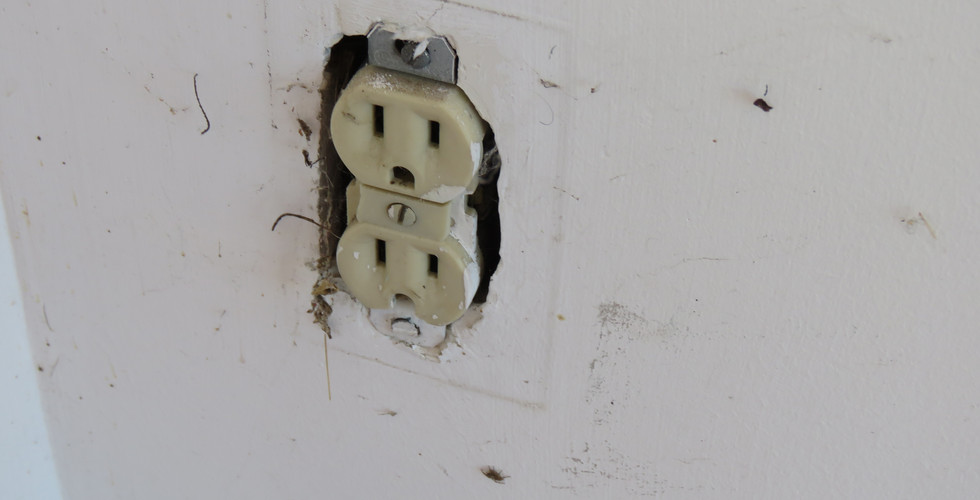10 Most Commonly Reported Defects (Part 1/2)
- Kyle Gates, Owner / Inspector
- Jun 26, 2018
- 3 min read
I often get asked what the most common defect I report on Home Inspections is. And while there’s no way for me to know for sure the actual condition that I report the most, I have a pretty good idea what the top 10 items are, at least. Some are serious safety issues, and others are not really a big deal. But I think they do illustrate the point that some items that are a significant safety concern are not always difficult or expensive to repair.
So here, in no particular order, are the top ten items that show up in my reports (I think):
1. An outlet or switch without a cover. Sometimes I feel like if I don’t find one of these for my report, that I must not have really done a thorough job. It seems like every home has at least one missing outlet cover, no matter how old the home, or how recently remodeled. This is reported as a safety hazard, due to the live electrical conductors that may be exposed. (That may seem silly, but my own son often roams our house with a screwdriver, just looking for things that need “fixed.” Needless to say, mine is the only home I know that is not missing any outlet covers!) But, the good news is this is an easy fix. Outlet covers can be found for as low at 28 cents and take all of one screw to install!
2. Lightbulbs burnt out. Generally speaking, most lightbulbs I encounter are working, but I still find almost one at every home that is not functioning. Usually outside. You know, that door to the outside that you never use and has a light next to it. Or maybe in the garage, but your garage door opener has a light in it that comes on when you press the button. Or one bulb in a 6-bulb chandelier went out, and you discovered you actually kind of preferred the softer light. No judgement, but it will be on my report. And while some inspectors will label this Defective, I usually note burnt-out bulbs as Marginal, since they are so easy to fix, with a note that if the fixture doesn’t function after bulb replacement, an electrician may be required to diagnose the problem.
3. Dirty HVAC filters. Okay, this is where I start to be a little surprised. Do people not know that they need to clean or replace their air filters every now and then? Most furnace and A/C manufacturers’ information recommends replacing disposable filters once a month! Here in our part of the world, where we don’t use our heaters that often and many homes don’t have A/C, I usually recommend that clients replace their filters at the beginning of each new heating season. Or just set a yearly reminder on your calendar. Get it done, and breathe easy (pun intended)!
4. Lack of downspout extensions on gutters. I can almost hear clients ignoring me when I bring this to their attention. Downspout extensions are supposed to direct rainwater well away from the home during rain, so that damage is not caused to the foundation. But I get it, downspout extensions are ugly, they can be trip hazards if they’re the permanent type, or they’re inconvenient if you have to install them before any rain storm. ‘And hey,’ clients might think, ‘isn’t my home built to be water-proof anyway?’ Well, yes and no. In most cases, your foundation is actually damp-proof, or what people might call “water resistant,” but not water-proof. What that means is that if too much water builds up, it can penetrate your foundation (or siding, if it’s low enough) and start causing damage. And that is ugly and inconvenient!
5. Large trees near the home and/or climbing plants on the home. While we’re outside and my clients are ignoring me (just kidding, I always hold my clients’ rapt attention!), let’s talk about plants near your home. Large trees can do large damage to foundations. But people love their shade. And while the look of some nice bougainvillea climbing up stucco wall is pretty ubiquitous around here, I like to remind clients that it is doing damage to the exterior of the home, and can be like a super-highway for pests and rodents trying to enter their home.
While some of the above items can create serious problems, I understand that a few are the type that clients are willing to take a chance on, for the benefits. And several are items that can come across as precautions, rather than defects. But the second half of my list really does deal with more serious (read: dangerous) issues. Any guesses what will be in the other half of the list? Let me know in comments below.








































